
(a.)
The graphs of the given parametric equations in the parametric interval
(a.)
Answer to Problem 43E
The graphs of the given parametric equations in the parametric interval
Explanation of Solution
Given:
The parametric equations;
Concept used:
The parametric equations are graphed for each of the given values of
Calculation:
The given parametric equations are
The graph of these parametric equations in the parametric interval
are as follows:
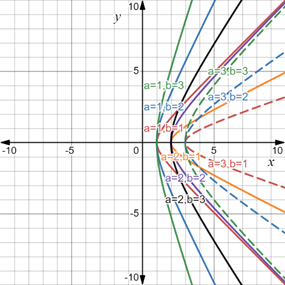
It can be seen that
Conclusion:
The graphs of the given parametric equations in the parametric interval
(b.)
The graph of the given parametric equations in the parametric interval
(b.)
Answer to Problem 43E
The graph of the given parametric equations in the parametric interval
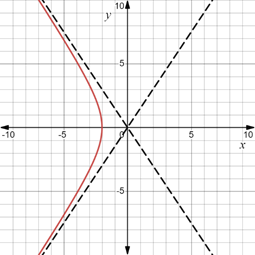
Explanation of Solution
Given:
The parametric equations;
Concept used:
The parametric equations are graphed for the given values of
Calculation:
The given parametric equations are
Put
The graph of these parametric equations in the parametric interval
are as follows:
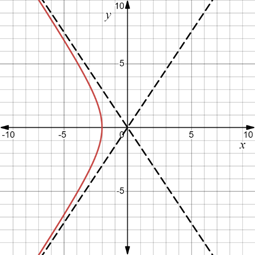
Conclusion:
The graph of the given parametric equations in the parametric interval
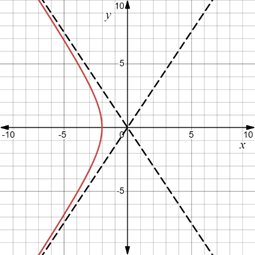
(c.)
The graph of the given parametric equations in the parametric interval
(c.)
Answer to Problem 43E
The graph of the given parametric equations in the parametric interval
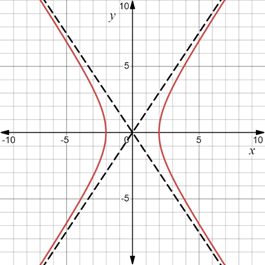
An explanation for the appearance of the lines based on the parameter
Explanation of Solution
Given:
The parametric equations;
Concept used:
The parametric equations are graphed for the given values of
Calculation:
The given parametric equations are
Put
The graph of these parametric equations in the parametric interval
are as follows:
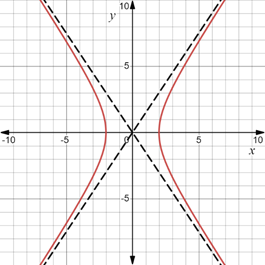
Note that both
So, both
Hence, the graph of these parametric equations is discontinuous at these points.
Since the graph is in connected mode, the dotted lines show up on the graph at these discontinuities.
Conclusion:
The graph of the given parametric equations in the parametric interval
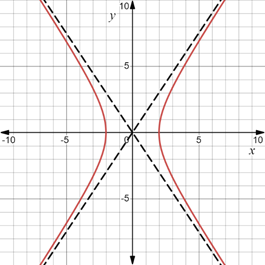
An explanation for the appearance of the lines based on the parameter
(d.)
To Explain:
(d.)
Answer to Problem 43E
It has been explained using algebra why
Explanation of Solution
Given:
The parametric equations;
Concept used:
According to
Calculation:
The given parametric equations are;
Put these values in
Simplifying,
On further simplification,
Put
Simplifying,
This is the required expression.
Conclusion:
It has been explained using algebra why
(e.)
To Repeat: The solutions of part (a), (b) and (d) using an appropriate version of (d) for the given parametric equations.
(e.)
Answer to Problem 43E
The solutions for part (a), (b) and (d) using an appropriate version of (d) have been repeated for the given parametric equations.
Explanation of Solution
Given:
The parametric equations;
Concept used:
The parametric equations are graphed for each of the given values of
Calculation:
The given parametric equations are
The graph of these parametric equations in the parametric interval
are as follows:
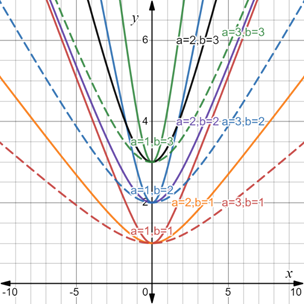
It can be seen that
The graph of the given parametric equations in the parametric interval
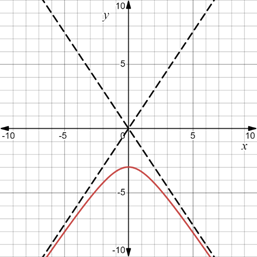
Now, for the given parametric equations, it follows that
This can be shown as follows:
Put the given equations;
Simplifying,
On further simplification,
Put
Simplifying,
This is the required proof.
Conclusion:
The solutions for part (a), (b) and (d) using an appropriate version of (d) have been repeated for the given parametric equations.
Chapter 0 Solutions
CALCULUS-W/XL ACCESS
- = 5 37 A 4 8 0.5 06 9arrow_forwardConsider the following system of equations, Ax=b : x+2y+3z - w = 2 2x4z2w = 3 -x+6y+17z7w = 0 -9x-2y+13z7w = -14 a. Find the solution to the system. Write it as a parametric equation. You can use a computer to do the row reduction. b. What is a geometric description of the solution? Explain how you know. c. Write the solution in vector form? d. What is the solution to the homogeneous system, Ax=0?arrow_forward2. Find a matrix A with the following qualities a. A is 3 x 3. b. The matrix A is not lower triangular and is not upper triangular. c. At least one value in each row is not a 1, 2,-1, -2, or 0 d. A is invertible.arrow_forward
- Find the exact area inside r=2sin(2\theta ) and outside r=\sqrt(3)arrow_forwardA 20 foot ladder rests on level ground; its head (top) is against a vertical wall. The bottom of the ladder begins by being 12 feet from the wall but begins moving away at the rate of 0.1 feet per second. At what rate is the top of the ladder slipping down the wall? You may use a calculator.arrow_forwardExplain the focus and reasons for establishment of 12.4.1(root test) and 12.4.2(ratio test)arrow_forward
- Use 12.4.2 to determine whether the infinite series on the right side of equation 12.6.5, 12.6.6 and 12.6.7 converges for every real number x.arrow_forwarduse Cauchy Mean-Value Theorem to derive Corollary 12.6.2, and then derive 12.6.3arrow_forwardExplain the focus and reasons for establishment of 12.5.4arrow_forward
 Calculus: Early TranscendentalsCalculusISBN:9781285741550Author:James StewartPublisher:Cengage Learning
Calculus: Early TranscendentalsCalculusISBN:9781285741550Author:James StewartPublisher:Cengage Learning Thomas' Calculus (14th Edition)CalculusISBN:9780134438986Author:Joel R. Hass, Christopher E. Heil, Maurice D. WeirPublisher:PEARSON
Thomas' Calculus (14th Edition)CalculusISBN:9780134438986Author:Joel R. Hass, Christopher E. Heil, Maurice D. WeirPublisher:PEARSON Calculus: Early Transcendentals (3rd Edition)CalculusISBN:9780134763644Author:William L. Briggs, Lyle Cochran, Bernard Gillett, Eric SchulzPublisher:PEARSON
Calculus: Early Transcendentals (3rd Edition)CalculusISBN:9780134763644Author:William L. Briggs, Lyle Cochran, Bernard Gillett, Eric SchulzPublisher:PEARSON Calculus: Early TranscendentalsCalculusISBN:9781319050740Author:Jon Rogawski, Colin Adams, Robert FranzosaPublisher:W. H. Freeman
Calculus: Early TranscendentalsCalculusISBN:9781319050740Author:Jon Rogawski, Colin Adams, Robert FranzosaPublisher:W. H. Freeman
 Calculus: Early Transcendental FunctionsCalculusISBN:9781337552516Author:Ron Larson, Bruce H. EdwardsPublisher:Cengage Learning
Calculus: Early Transcendental FunctionsCalculusISBN:9781337552516Author:Ron Larson, Bruce H. EdwardsPublisher:Cengage Learning





